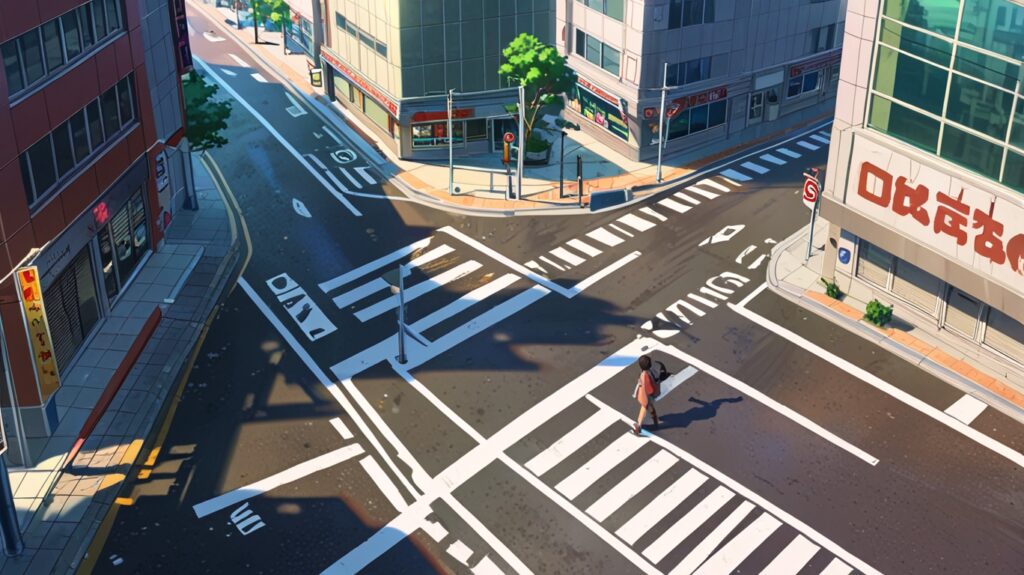Discover 100 helpful English phrases for asking and giving directions with ease. Learn how to navigate new places confidently using these simple, practical phrases in part 1 of our guide.

Table of Contents
- Introduction
- Helpful English Phrases Asking for Directions
- Giving Directions
- Describing Distance and Time
- Using Landmarks
- Prepositions of Place and Movement
- Public Transportation Phrases
- Clarification and Confirmation Phrases
- Tips for Effective Communication
- Conclusion
Introduction
Navigating an unfamiliar place can be challenging, especially when language barriers are involved. This comprehensive guide provides 100 essential English phrases for asking and giving directions, ensuring you can confidently find your way or help others do the same.
If you want to see a YouTube video to practice your English speaking click on the video below.
Helpful English Phrases: Asking for Directions
General Phrases for Asking
- Excuse me, could you help me with directions?
- I’m a bit lost. Can you assist me?
- Do you know how to get to [place]?
- I’m looking for [place]. Any idea where it is?
- Could you point me in the right direction for [place]?
- I’m trying to find [place]. Can you help?
- What’s the best way to reach [destination]?
- Is [place] far from here?
- How do I get to [place] from here?
- Can you show me on the map where [place] is?
Specific Location Phrases for Asking
- Where’s the nearest subway station?
- Is there a bank around here?
- How can I get to the city center?
- Do you know if there’s a pharmacy nearby?
- I’m looking for a good restaurant. Any suggestions?
- Where can I find a taxi stand?
- Is there a public restroom in this area?
- Could you direct me to the nearest hotel?
- How do I get to the main tourist attractions?
- Where’s the closest grocery store?

Giving Directions
General Phrases for Giving
- Go straight ahead for about [distance].
- Turn left at the next intersection.
- Make a right after the [landmark].
- Keep going until you see [landmark].
- It’s on your left-hand side.
- You’ll find it on the right.
- Head north for about [distance].
- Continue south until you reach [landmark].
- Follow this road for [distance].
- It’s just around the corner.
Specific Instruction Phrases
- Take the first left after the traffic light.
- Go past the park and turn right at the second street.
- Cross the bridge and it’s the third building on your right.
- Walk through the square and you’ll see it facing you.
- It’s in the building with the blue awning.
- Look for the tall clock tower and turn left there.
- Enter through the side door next to the fountain.
- Take the elevator to the 5th floor and turn right.
- Follow the signs for [place] once you enter the building.
- It’s located in the basement of the main hall.
Describing Distance and Time
- It’s about a 5-minute walk from here.
- You’re looking at roughly a 10-minute drive.
- It’s approximately 2 kilometers away.
- The journey should take around 15 minutes by bus.
- It’s just a stone’s throw away.
- You’re about halfway there.
- It’s quite a distance; you might want to consider taking a taxi.
- It’s within walking distance, about 500 meters.
- You’re very close, just another block or two.
- It’s a bit of a hike, probably 30 minutes on foot.

Using Landmarks
- You’ll see a big red brick building; it’s right next to that.
- Look for the tall glass skyscraper; you can’t miss it.
- It’s opposite the old church with the green dome.
- You’ll pass a large fountain; the entrance is just beyond that.
- There’s a statue of a horse in front of the building.
- It’s in the same complex as the city library.
- You’ll know you’ve gone too far if you reach the river.
- It’s right behind the main post office.
- Look for the building with the clock on its facade.
- It’s next to the park with the famous rose garden.
Prepositions of Place and Movement
- The museum is across from the art gallery.
- You’ll find the café between the bookstore and the bank.
- The hotel is adjacent to the conference center.
- The restaurant is situated opposite the theater.
- The entrance is located on the side of the building.
- The shop is at the corner of First Street and Oak Avenue.
- You’ll see the sign above the main doors.
- The parking lot is underneath the shopping complex.
- The office is on the top floor of the high-rise.
- The ticket booth is by the main gate.

Public Transportation Phrases
- Which bus goes to [destination]?
- Where can I buy a metro ticket?
- Is this the right platform for trains to [place]?
- Does this tram stop at [location]?
- How often do buses run on this route?
- Where’s the nearest bus stop?
- Can you tell me which stop I should get off at for [place]?
- Is there a day pass available for public transport?
- How do I get to [place] using public transportation?
- Are there any night buses to [destination]?
Clarification and Confirmation Phrases
- Could you please repeat that?
- Let me make sure I understood correctly…
- So, you’re saying I should…
- Is it closer to X or Y?
- Did you mean the east entrance or the west?
- Just to confirm, I take a left after the [landmark], right?
- How will I know when I’ve reached [place]?
- Are there any specific landmarks I should look out for?
- Is there an easier way to get there?
- Can you write down the address for me?

Tips for Effective Communication
- Speak slowly and clearly when asking for directions.
- Use simple words and avoid complex vocabulary.
- Don’t be afraid to ask for clarification if you don’t understand.
- Thank the person for their help.
- Repeat the directions back to ensure you’ve understood correctly.
- Use hand gestures to indicate directions when explaining.
- Offer to show the location on a map if you’re giving directions.
- Be patient if the person is struggling to explain in English.
- If possible, write down key points or landmarks.
- Always start with a polite greeting when approaching someone for help.
Conclusion
Mastering these 100 phrases will significantly enhance your ability to navigate in English-speaking environments. Remember, practice makes perfect, so don’t hesitate to use these phrases whenever you have the opportunity. Whether you’re a tourist exploring a new city or a local helping out a visitor, clear communication about directions can make all the difference in creating a positive experience.
As you become more comfortable with these phrases, you’ll find that asking for and giving directions becomes second nature. This skill not only helps you find your way but also opens up opportunities for friendly interactions and cultural exchanges. So go ahead, step out with confidence, and explore the world around you!

Recommended Article
Here is a recommended article for you: “Never Get Lost Again: Top 100 English Direction Phrases for Travelers“


